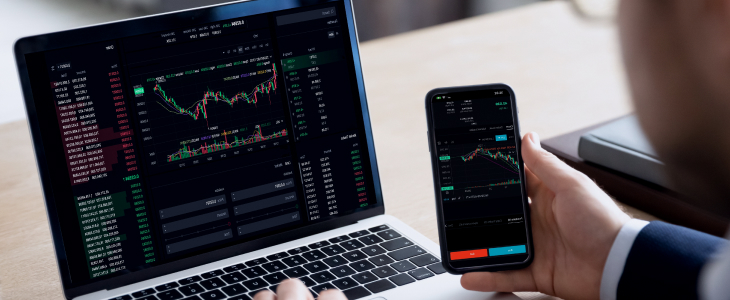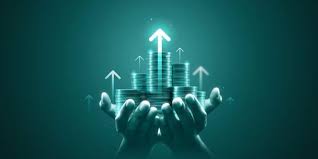The Future of Currency An In-Depth Look at Automated Trading in Forex

In the fast-paced world of forex trading, opportunities to buy and sell currencies arise in fractions of a second. As traders seek ways to capitalize on these opportunities, the concept of automated trading forex Online Trading CM has gained prominence, revolutionizing the landscape of foreign exchange. This article will explore automated trading in forex, examining its advantages, the mechanics behind it, and how traders can implement effective automated strategies.
Understanding Automated Trading in Forex
Automated trading refers to the use of computer programs and algorithms to execute trades based on predefined criteria. This trading mechanism takes advantage of market fluctuations, executing orders with minimal delay and allowing traders to capitalize on market opportunities that human traders might miss. Automated forex trading has gained traction due to its potential for precision and efficiency.
Advantages of Automated Trading
There are several benefits to automated trading in the forex market, including:
- Emotion-Free Trading: Automated trading eliminates emotional decision-making, which can often cloud judgment and lead to poor trading choices. By using algorithms, traders can rely on data-driven analyses and strategies.
- Increased Efficiency: Traders can place multiple trades simultaneously and monitor various currency pairs without needing to be glued to their screens. The 24/5 forex market allows for around-the-clock trading, and automated systems can capitalize on opportunities regardless of time zones.
- Backtesting and Optimization: With automated trading systems, traders can test their strategies against historical data. This backtesting allows for adjustments and optimization, potentially increasing the probability of success in live trading conditions.
- Discipline and Consistency: Automated trading systems strictly follow the predefined rules, ensuring a disciplined approach and consistent trading activity. This is crucial for long-term success in the forex market.
How Automated Trading Works
To understand automated trading, it is essential to grasp the mechanics involved:
- Algorithm Design: Traders develop algorithms based on technical analysis, market indicators, historical data, and specific trading strategies. These algorithms dictate when to buy, sell, or hold currencies based on market conditions.
- Software and Platforms: Traders can use various trading platforms providing automated trading capabilities. These platforms allow users to implement their strategies, monitor performance, and modify parameters as needed.
- Execution: Once the algorithm identifies a trading signal, it automatically executes the trade on behalf of the trader. This process occurs in milliseconds, capturing the optimal entry and exit points in the market.
- Monitoring and Adjustment: Although the trading is automated, regular monitoring is essential to ensure the strategy remains effective. Traders can adjust parameters based on changing market conditions or backtest strategies for optimization.
Types of Automated Trading Strategies

Traders can use various automated trading strategies in the forex market, including:
- Trend Following: This strategy involves identifying and trading in the direction of the prevailing market trend. Automated systems can detect trends using moving averages or other momentum indicators.
- Mean Reversion: This approach is based on the idea that prices will revert to their historical average over time. Automated systems can spot overbought or oversold conditions and execute trades accordingly.
- Arbitrage: Traders seeking to take advantage of price discrepancies between different markets or instruments can use automated systems to capitalise on arbitrage opportunities.
- Breakout Trading: Automated systems can identify key support and resistance levels, executing trades when prices break through these levels with significant volume.
Choosing the Right Automated Trading System
When selecting an automated trading system, traders should consider several factors:
- Strategy Alignment: Ensure the system aligns with the trader’s strategy and risk appetite. Different systems cater to varying trading styles, whether short-term scalping or long-term position trading.
- Reliability and Performance: Research the system’s track record. Look for verified performance statistics and user testimonials. A reliable system will have a long history of effectiveness.
- Usability: The platform should be user-friendly, allowing traders to set up and configure their algorithms easily without requiring extensive programming knowledge.
- Support and Community: A strong support system and active user community can provide new users with valuable insights and assistance when implementing their automated trading strategies.
Risks and Limitations of Automated Trading
While automated trading offers numerous advantages, it also comes with potential risks and limitations:
- Technical Failures: System failures or downtime can lead to missed trading opportunities or unintended losses. Traders should have contingency plans in place.
- Over-Optimization: There is a risk of overfitting strategies to historical data, resulting in poor real-time performance. Traders must ensure their algorithms are robust and flexible enough to adapt to changing market conditions.
- Market Conditions: Automated systems might struggle in volatile or unpredictable market environments. Traders should remain vigilant and be prepared to intervene when necessary.
- Dependency: Relying solely on automated systems may diminish a trader’s analytical skills and market understanding. It’s important to maintain a balance between automated and manual trading techniques.
Conclusion
Automated trading in forex represents a significant advancement in trading technology, enabling traders to execute strategies with precision and efficiency. As the forex market continues to evolve, understanding the mechanics and implications of automated trading will be key for traders seeking to enhance their performance and capitalize on market opportunities. By harnessing the power of algorithms and technology, traders can navigate the complexities of the forex market, playing an agile and informed role in their trading endeavors.


